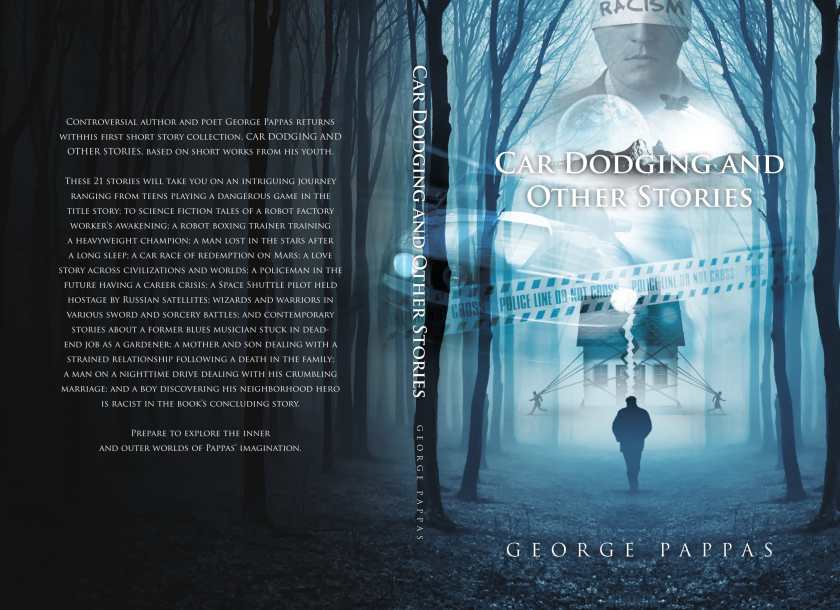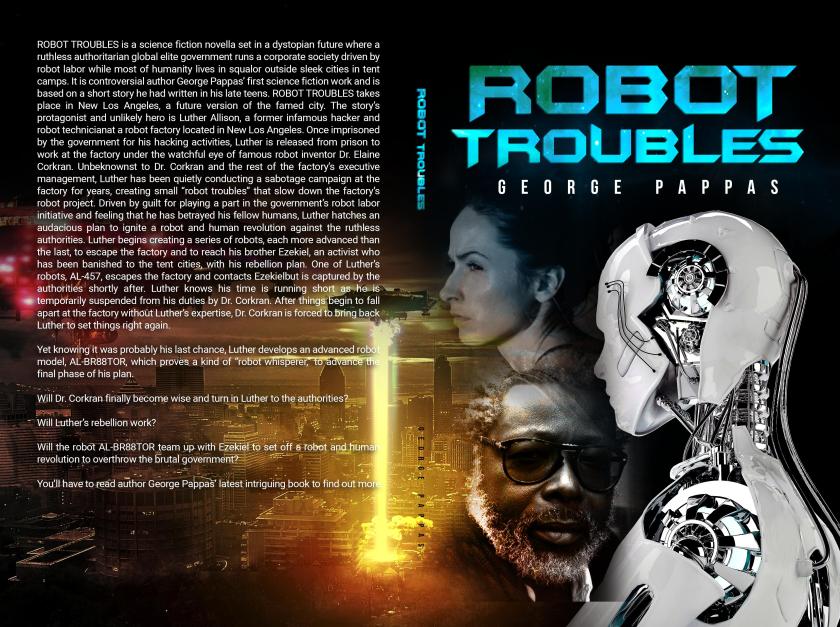
At the start of this decade, I was at a troubling crossroads as a writer.
I had only published one indie book, my first novel, LETTERS FROM CYBERSPACE, and was unsure of how to move forward and pursue my writing dreams.
I had written drafts of what would later become my erotica novels MONOGAMY SUCKS and DEAR HEF, but was afraid to show my work to anyone. I was still too fearful of what others might say about my books. It was a form of creative paralysis that many writers could relate to.
Finally, early in 2010, I had an idea to start sharing chapters of MONOGAMY SUCKS on a blog to see what readers thought. I felt I had nothing to lose.
This later led to my book being published by a new small publisher along with DEAF HEF not long after. My detour into the traditional publishing world thankfully only lasted a few years, but it was a valuable one. About five years ago, when my publisher was bought by another and they returned my book rights and took down all of my books, I was initially furious. However, it proved a godsend as it pushed me the embrace the potential of indie publishing and I subsequently brought out previous versions of my work and never looked back.
The experience taught me that I would never share control of the publishing of my work again. My books had to ultimately reflect my vision only or what was the point of putting my name on them? Also, I wanted to determine the appearance of my work and when and how it would be released. Amazon and Smashwords have been proven to be great resources for sharing my writing. I couldn’t recommend them enough for indie writers.
As we close this decade and prepare to start another, I find myself completely in control of my work having published 13 indie books and written two more I can’t wait to share.
This past year was another milestone year on my writing journey.
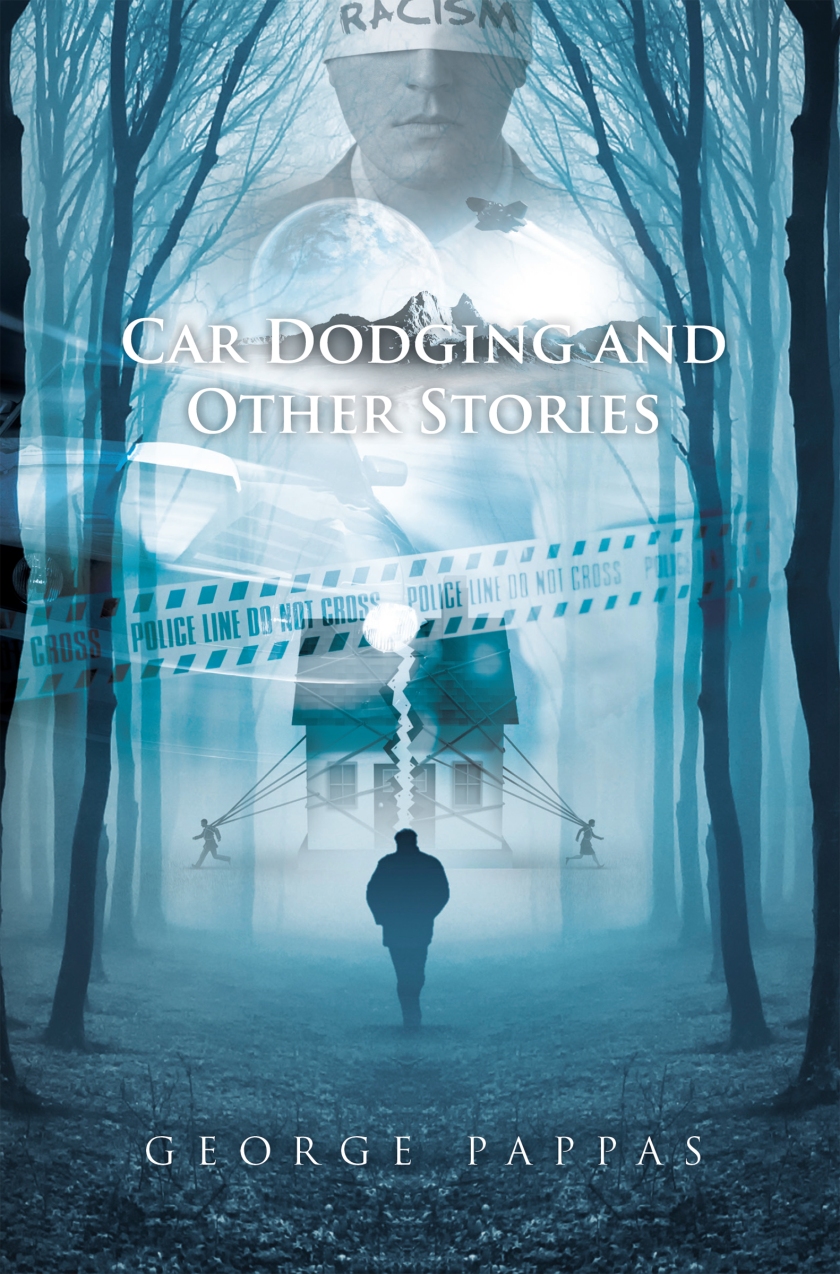
Earlier this year, I published my first short story collection CAR DODGING AND OTHER STORIES on Amazon and Smashwords as a digital book and as an Amazon paperback.
All the stories in this collection were based on previous works I had written in my teens or for my college English classes at California State University Long Beach. I updated the stories but worked to maintain as much as I could my original, youthful vision I had attempted decades before. BACK OF THE STATION WAGON, the final story in my collection, is the only work in this book not created from a previous story from my youth. However, it was inspired by a racist incident during my childhood.
As a quick overview of my short story collection: CAR DODGING focuses on a childhood game that turns deadly; TROUBLES, based on my first short story written at 17, is about a robot assembly line worker’s awakening in a dark future; JACK is a story about a robot boxing trainer and the fighter he helps turn into a heavyweight champion; THE NEIGHBOR is about a man finding out his neighbor is from another world; THE ELDERS imagines a space traveler who sleeps for 210 years and finds himself on a new world many lightyears from Earth; BROKEN BARRIERS is a love story across different worlds and civilizations; A DEADLY SPACE focuses on a space shuttle pilot being held hostage by two Russian killer satellites; THE HELLHOLE, PART 1, THE FIRST FIGHT, A BATTLE OF WIZARDS: ANDOLEN’S ARENA SHOWDOWN, THE ADVENTURES OF THE MAGIC SWORD, JONAH’S VICTORY and A SWORD’S EDGE are all fantasy, sword and sorcery stories inspired by my love of the LORD OF THE RINGS and other fantasy books in my youth; THE JOB is about a policeman’s dissatisfaction with his job in the future; ANOTHER CHANCE focuses on a veteran car racer’s comeback journey culminating with a race on the planet Mars; MAKING ORANGE JUICE and A CONVERSATION WITH MOTHER were scene exercises for my college class that I have updated as short stories; STEPS TO NOWHERE was expanded from the A CONVERSATION WITH MOTHER scene into a larger story that explores a young teenager’s growing awkwardness with his mother following his father’s death; THE GARDENER is about a former blues singer who works in a dead-end job as a gardener at a university and reflects on his life; SIDE OF THE ROAD focuses on a man parked on the side of a freeway lamenting his failing marriage, and collection concludes with the previously mentioned BACK OF THE STATION WAGON.
In keeping with the theme of reviving my past writing, this past summer, I launched my 13th book, the novel JAKE’S WAR: JULY 4, 2076 on Amazon and Smashwords as a digital book and on Amazon as a paperback. It based was on the first novel I had hand-written in August 1977 at the age of 15 while inspired by the film STAR WARS.
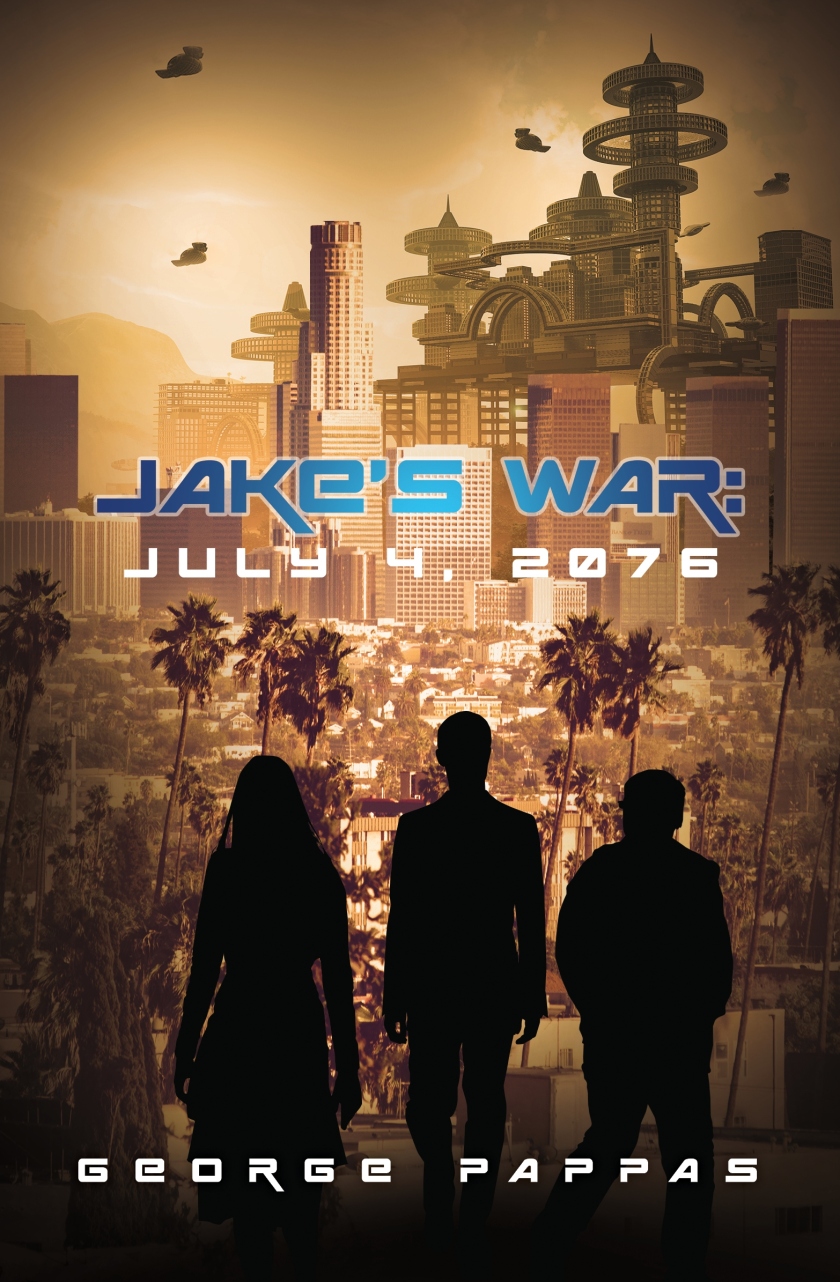
As with my previous novel ROBOT TROUBLES and short story collection CAR DODGING, which are also based on writing from my youth, I updated JAKE’S WAR where it was appropriate, but I wanted to stick as close to the original story as possible. This novel was — as with those earlier books – an attempt to recapture my youthful writing spirit if I could.
A quick novel synopsis: JAKE’S WAR: JULY 4, 2076 is a tale of love and war at the time of the American Tricentennial. The story follows the adventures of a former soldier, pilot, and diplomat, Jake Chadwick.
The Communes, comprised of Russia and China and led by ruthless leader Yuri Lutin, declares war against America and its allies on the Tricentennial, sparking the long-dreaded World War III.
Jake, who has fallen in love with former Space Navy Seal war hero Jill Yamamoto, reluctantly returns to war against Jill’s wishes and warnings. Jill, who earned the Medal of Honor in a past Moon Base Rebellion, vows to never return to war and is torn about her decision to remain a diplomat as the conflict wages on against the Communes.
Joining Jake in the war against the Communes are his friends, Jason Kendrick and Sue Myers, and both play key roles in Jake’s journey.
Although I changed a lot of my original novel, I kept the dark, creative original ending. This book concludes as my dreaming fifteen-year-old mind imagined it.
Another seminal book for me this decade was my first science fiction novel, ROBOT TROUBLES.
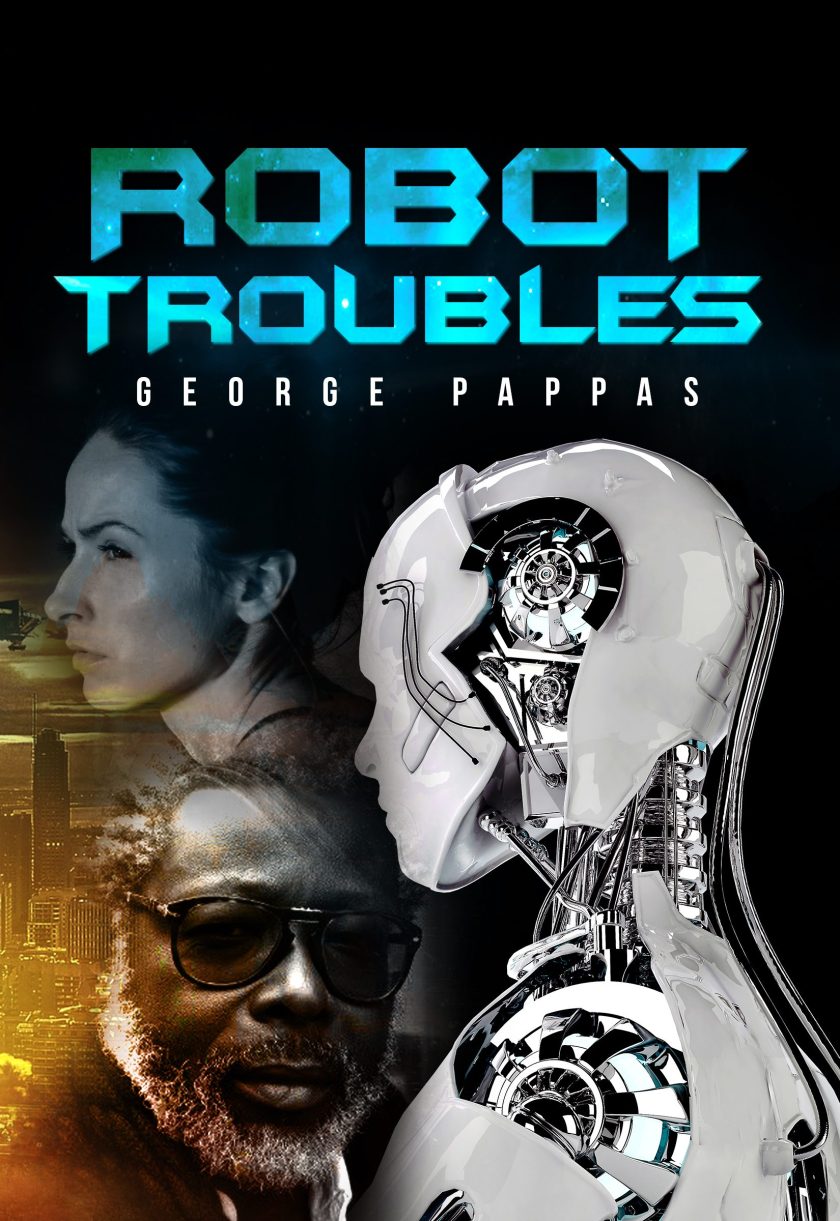
The brilliant author Isaac Asimov so captivated and inspired me that I decided as an ambitious 18-year-old to write a robot story of my own in the late 1970s. That initial story titled, TROUBLES, (which is also featured in my short story collection CAR DODGING), was the basis for my science fiction novella, ROBOT TROUBLES, which is available on Amazon and Smashwords as a digital book and in a paperback version on Amazon.
ROBOT TROUBLES is a science fiction novella set in a dystopian future where a ruthless authoritarian global elite government runs a corporate society driven by robot labor while most of humanity lives in squalor outside sleek cities in tent camps. ROBOT TROUBLES takes place in New Los Angeles, a future version of the famed city. The story’s protagonist and the unlikely hero is Luther, a former infamous hacker and robot technician at a robot factory located in New Los Angeles. Once imprisoned by the government for his hacking activities, Luther is released from prison to work at the factory under the watchful eye of famous robot inventor Dr. Elaine Corkran. Unbeknownst to Dr. Corkran and the rest of the factory’s executive management, Luther has been quietly conducting a sabotage campaign at the factory for years, creating small “robot troubles” that slowed down the factory’s robot project. Driven by guilt for playing a part in the government’s robot labor initiative and feeling as if he has let his fellow humans down, Luther hatches an audacious plan to ignite a robot and human revolution against the ruthless authorities. Luther begins creating a series of robots, each more advanced than the next, to escape the factory and to reach his brother Ezekiel, an activist who has been banished to the tent cities, with his rebellion plan. One of Luther’s robots, AL-457, does escape and contacts Ezekiel with his plan but is captured by authorities. Luther knows time is running short for him as he is temporarily suspended from his duties by Dr. Corkran. After things begin to fall apart at the factory without Luther’s expertise, Dr. Corkran is forced to bring back Luther to set things right again.
Yet knowing it was probably his last chance, Luther developed an advanced robot model, AL-BR88TOR, which proved a kind of “robot whisperer,” to advance the final phase of his plan.
This past year, I started what I believe will be another breakthrough novel for me about the funny, crazy, strange, heartbreaking tales from my long-time public relations career. I wanted to write my book in the edgy and humorous vein of my novel MONOGAMY SUCKS and hold nothing back in the frank and honest way I describe the up and downs of working in public relations.
The book has its origins in an anonymous blog I started earlier this year. I felt so liberated finally exploring my angst, heartbreak, frustration and honest feelings about my PR career and the public relations industry that I turned it into a book.
I recently started the third draft, and it is turning out to be an epic novel — 55 chapters and more than 600 pages. I love how it is coming out. This novel will need about 9-10 drafts before it will be ready to share. So, that should take me about a year or two before my novel is ready to publish on Amazon, etc. I plan to publish my novel in late 2021 or early 2022. This will be the first volume of many planned novels depicting my public relations experiences.
As I look ahead to the next year, I am planning to launch a poetry collection about life during the presidency of Donald J. Trump and I also may bring out another poetry collection based on my lyrics.
Over the next decade, I am looking to launch another 20-25 books including more intriguing novels and poetry collections. The possibilities are truly endless with Indie publishing…
I am grateful for a lot of things these days, but I am most grateful for my writing and the joy, passion, and purpose it brings me daily. Its rewards are far beyond what I can describe.
Happy New Year and a happy new decade and never stop writing and creating. Always ignore haters.
GP
